HITLER’S EAGLES NEST
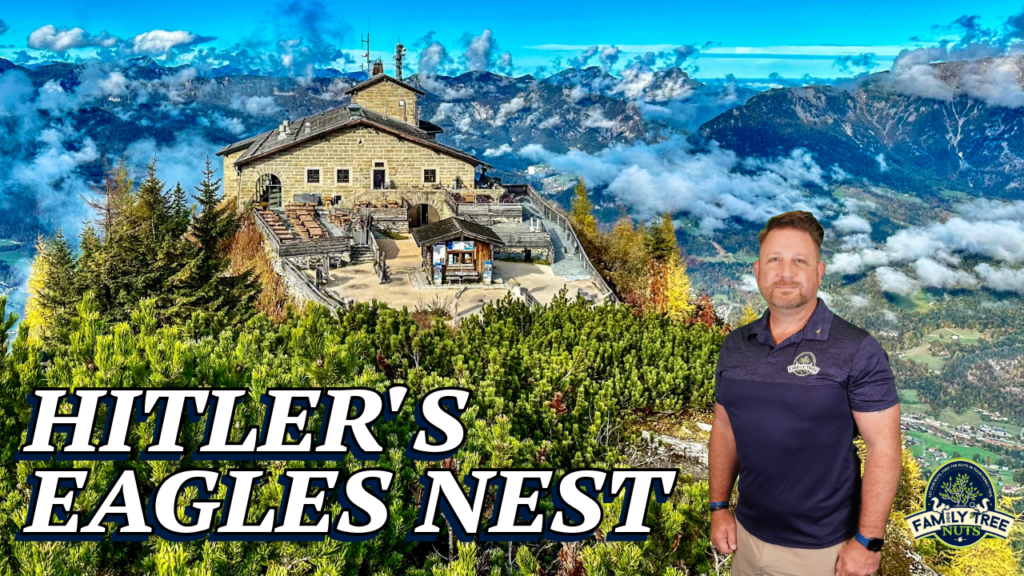
Welcome, everyone, to a journey up to one of the most breathtaking and historically significant spots in the world: Hitler’s Eagle’s Nest, or the Kehlsteinhaus, perched high above the Bavarian Alps. Today, I’ll be guiding you through its history, its construction, and its features—all while showing you some of the most stunning scenery on Earth. Before we begin, a quick disclaimer: This is a recounting of history. We are not here to glorify Adolf Hitler or the Nazi regime, but to understand a place tied to their story, now transformed into a site of reflection and natural beauty. In about thirty seconds, I’ll meet you at the base of the mountain and we ascend together into this remarkable alpine world.
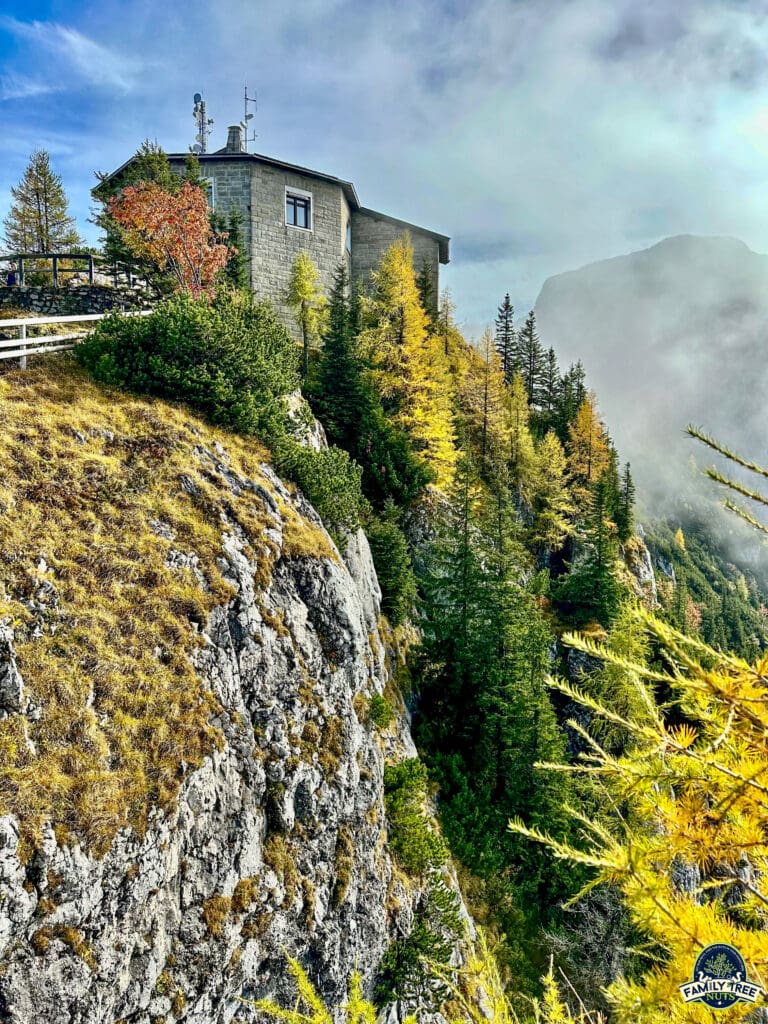
Hey everybody this is Colonel Carson with Family Tree Nuts, and I’m a professional genealogist and a historian. We recently visited the Eagles Nest, and I want to share its story and show its sights with all of you. At Family Tree Nuts, we build family trees for clients that either don’t know how, don’t have the time, or don’t want to pay those expensive membership fees. We’d love to honor your ancestors for you. We also make history videos all over the United States, and a few countries. If you like videos like these, be sure to subscribe to our YouTube channel. This video is one of several that we have from the area and about Hitler and the Nazi’s, so you will want to catch those playlists. Now back to the story.
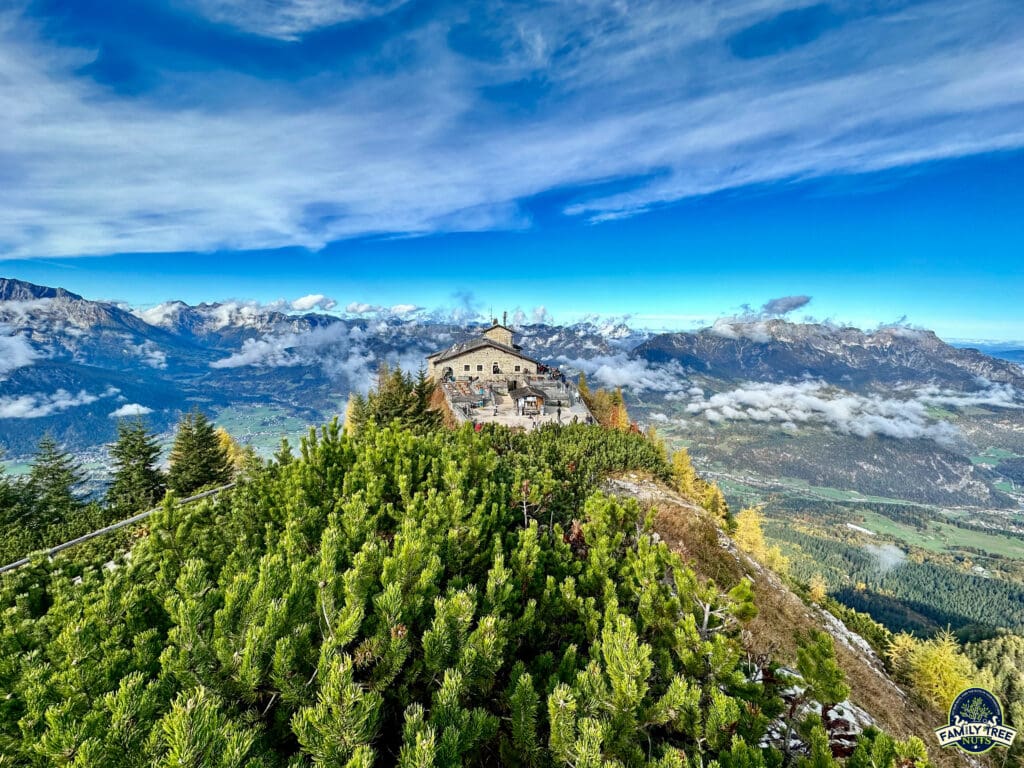
Our journey begins at the Hintereck parking area in Obersalzberg, just above the charming town of Berchtesgaden. Here, you’ll park your car and board a specially designed shuttle bus. Since 1952, private vehicles have been banned from the narrow mountain road ahead. As the bus pulls away, you’re immediately swept into an engineering marvel: a 6.5-kilometer zigzag road that climbs 800 meters through solid rock. The road twists and turns, with five tunnels carved into the mountainside, offering fleeting glimpses of the emerald valleys below. Sometimes, you’re so high you’re weaving through clouds, it’s a heart-pounding ascent, not just for the steepness, but for the sheer beauty unfolding at every bend. Hitler rarely made this trip himself, but today, it’s our gateway to the top.
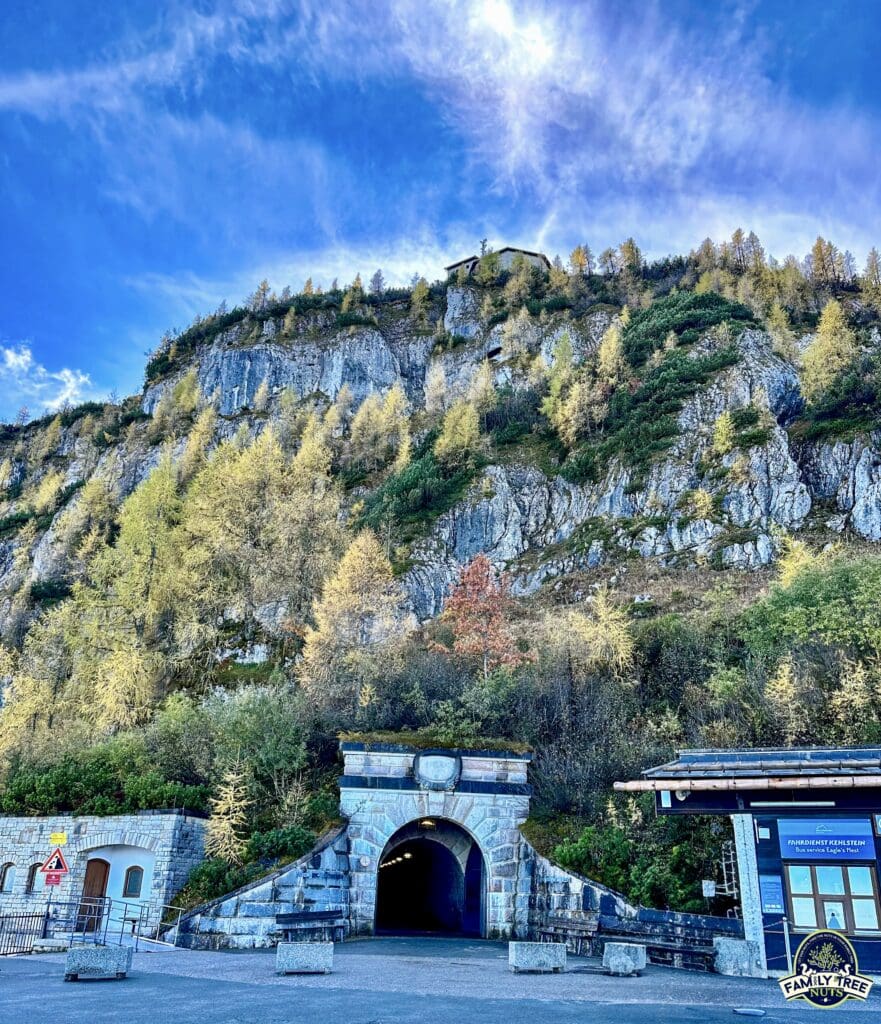
The ride up takes about twenty minutes, and as the bus rounds its final turn, we arrive at a small gravel parking area near the peak. It’s compact, dwarfed by the granite cliffs rising sharply around us. Above, the Kehlsteinhaus perches like a crown, and beyond it, the Alps stretch out in a symphony of jagged peaks and rolling green valleys. It’s a view so vast and pristine, you feel like you’re standing at the edge of the world—sometimes literally in the clouds. Step off, and you’re greeted by a pair of massive brass doors—strong, imposing, and styled with elegance—marking the entrance to a 124-meter-long tunnel. This tunnel, lined with marble and once heated, was built so Hitler could be driven right through it in a car to the elevator. Imagine the sound of tires echoing off these walls as he avoided the mountain air he distrusted.
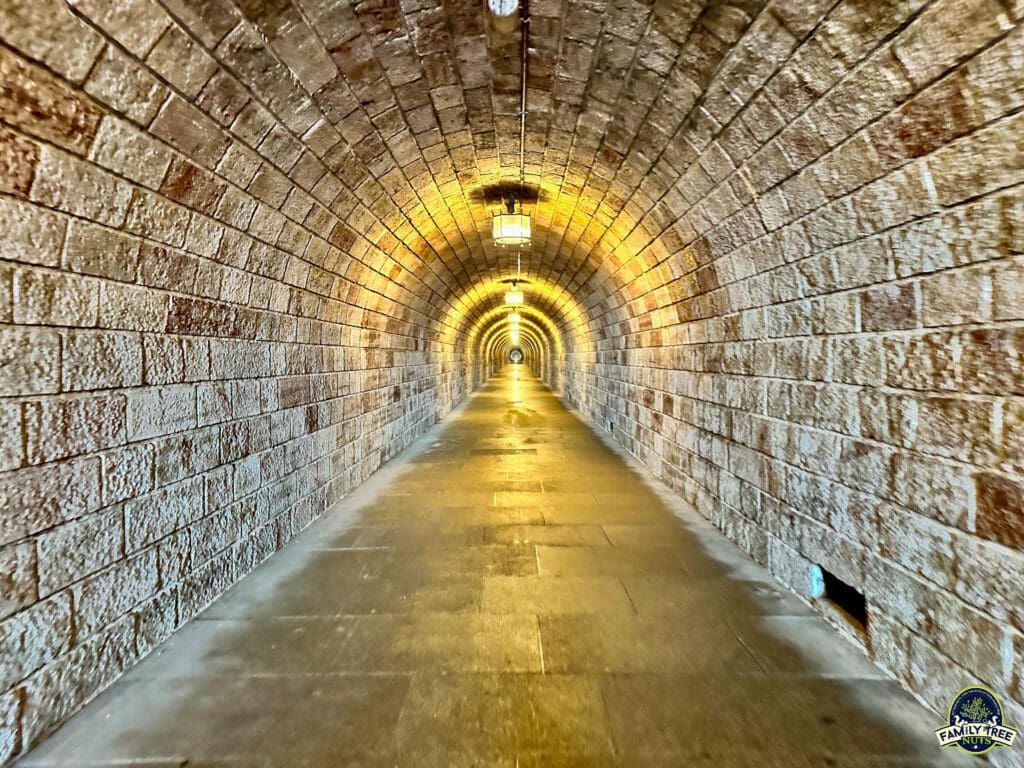
At the end of the tunnel, you reach a circular waiting room with a domed ceiling, and here’s where things get interesting. There is actually two elevators here, a utilitarian one below for staff, and the famous ‘golden elevator’ above, reserved for Hitler and VIPs. The elevators have a short, slightly sideways lift—an engineering quirk—before you step into the main attraction: the golden elevator. Polished brass walls, Venetian mirrors, and green leather make it a luxurious capsule, rocketing you 124 meters straight up through the mountain. Hitler hated this ride, fearing lightning might strike the winch, but for us, it’s a thrilling ascent. No photos are allowed inside, so soak it in with your eyes unless you live on the edge a bit.
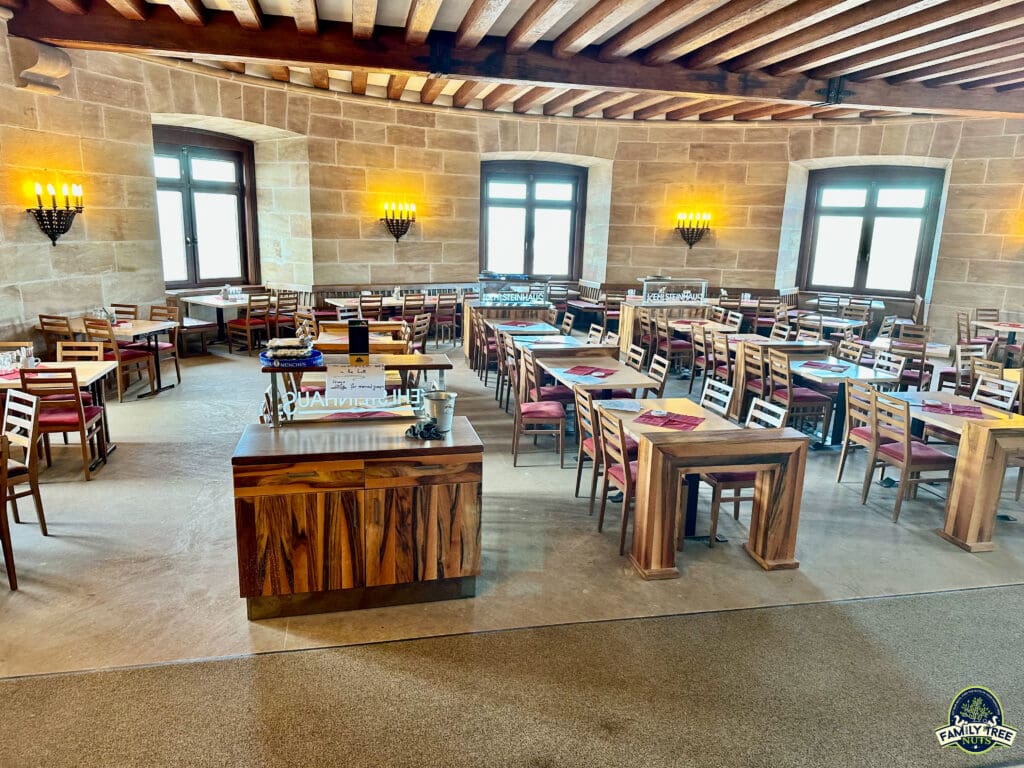
The doors open, and you’re in the Eagles Nest itself. Straight ahead is the dining area, now a cozy restaurant where you can order hearty Bavarian fare—think goulash or schnitzel—while gazing out at the Alps. Hitler hosted dignitaries here, like French ambassador André François-Poncet in 1938, who coined the name ‘Eagle’s Nest.’ The room’s simple, but the views are hard to describe!
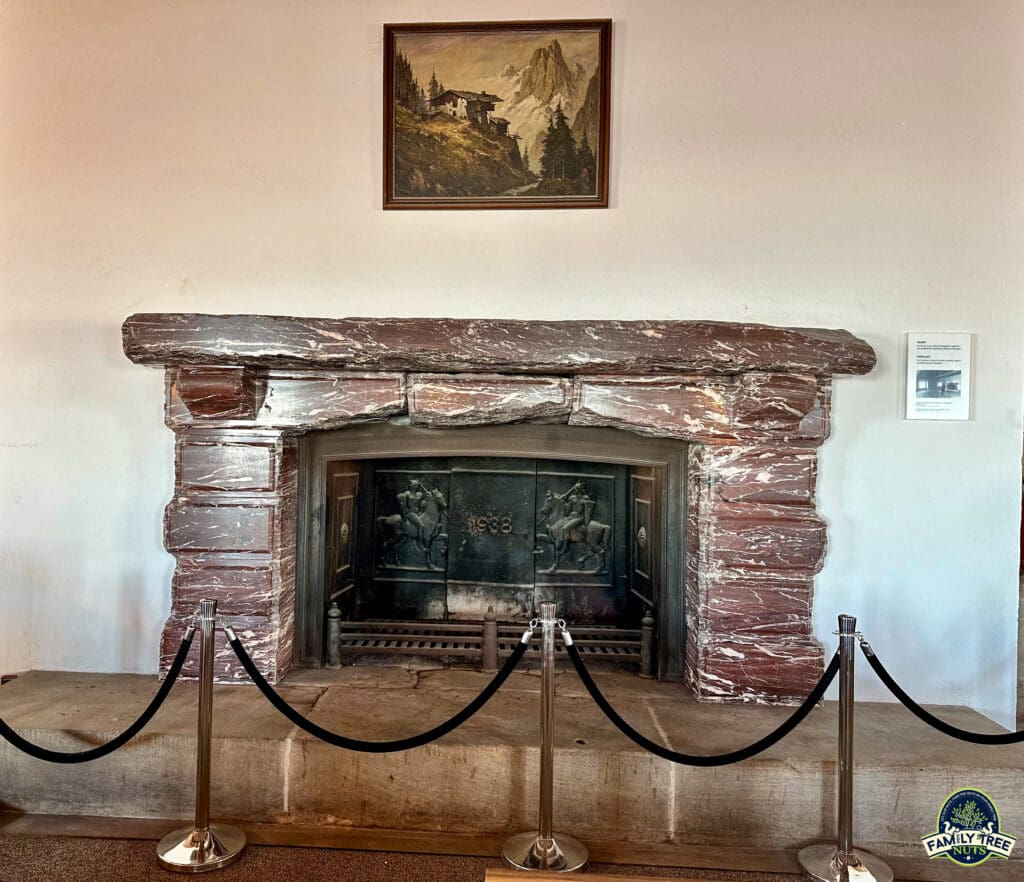
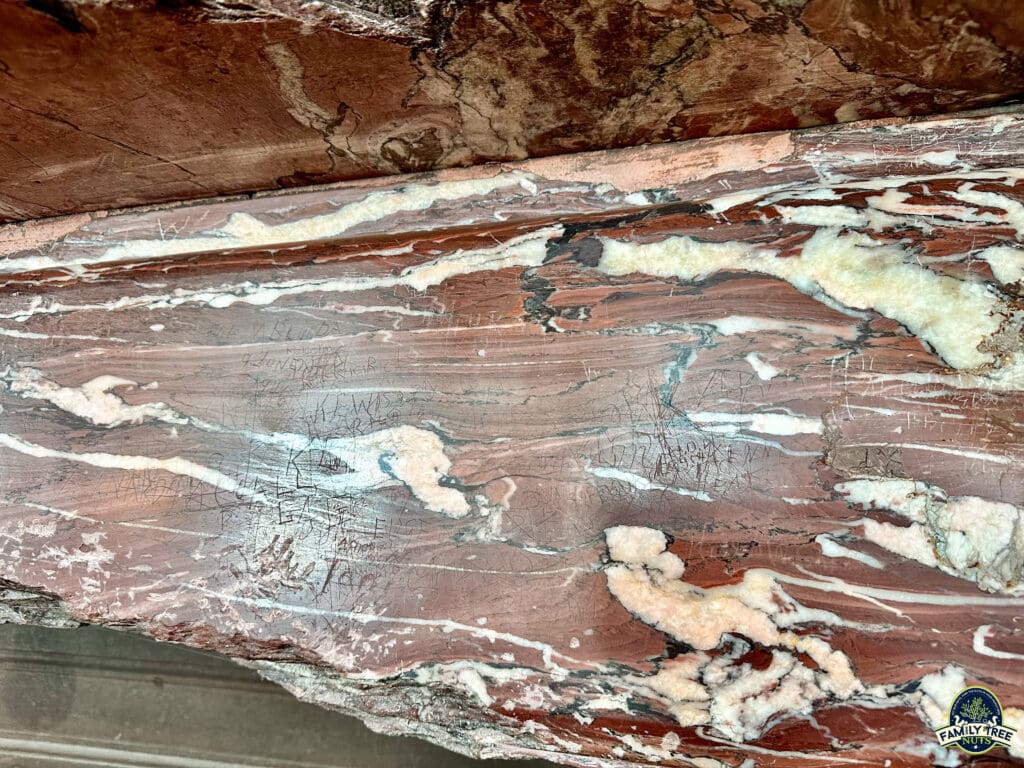
The highlight of the room is the fireplace made of red Italian marble and was a gift from Mussolini. It dominates the room but look closely: its edges are chipped and scarred, etched with names and dates from American soldiers who stormed here in 1945, taking chunks as souvenirs. Hitler didn’t linger here, it was too high, too remote, but he did entertain guests here, like at Eva Braun’s sister’s wedding reception in 1944.
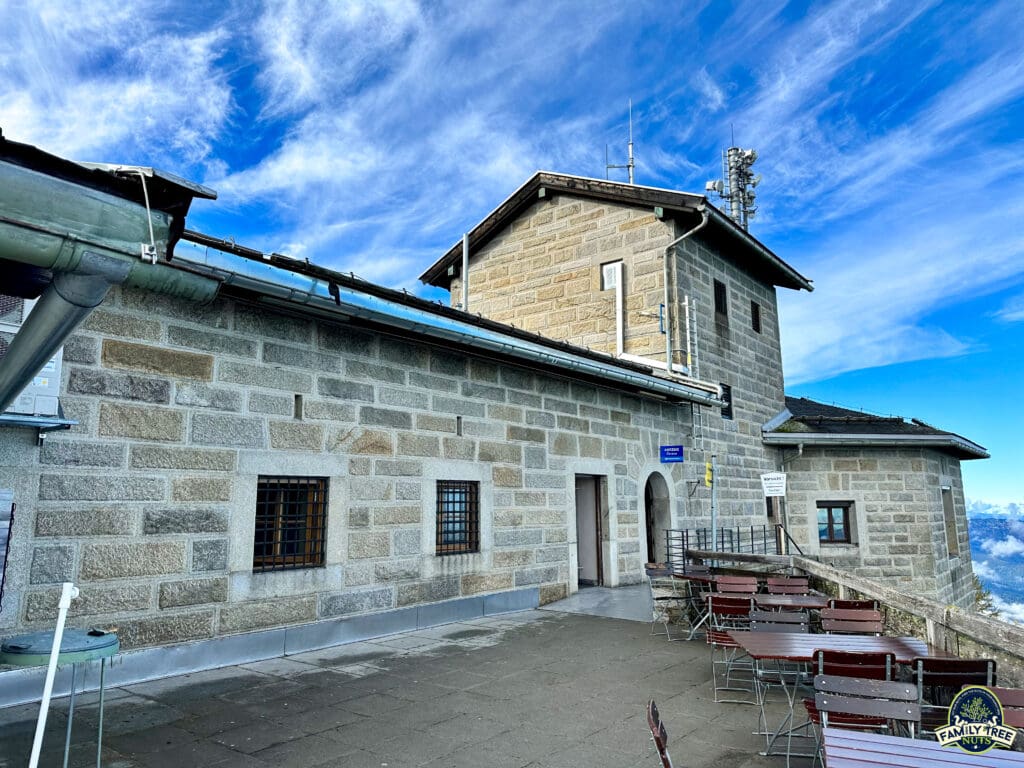
Step outside to the sun porch, and the real magic hits. Display boards line the terrace, packed with photos and facts about the Nest’s construction and history. Here Hitler was known to sit and enjoy a 360-degree panorama of the Bavarian and Austrian Alps, so vivid and endless. On misty days, you’re wrapped in clouds, a surreal perch above the world—one of Earth’s most scenic spots.
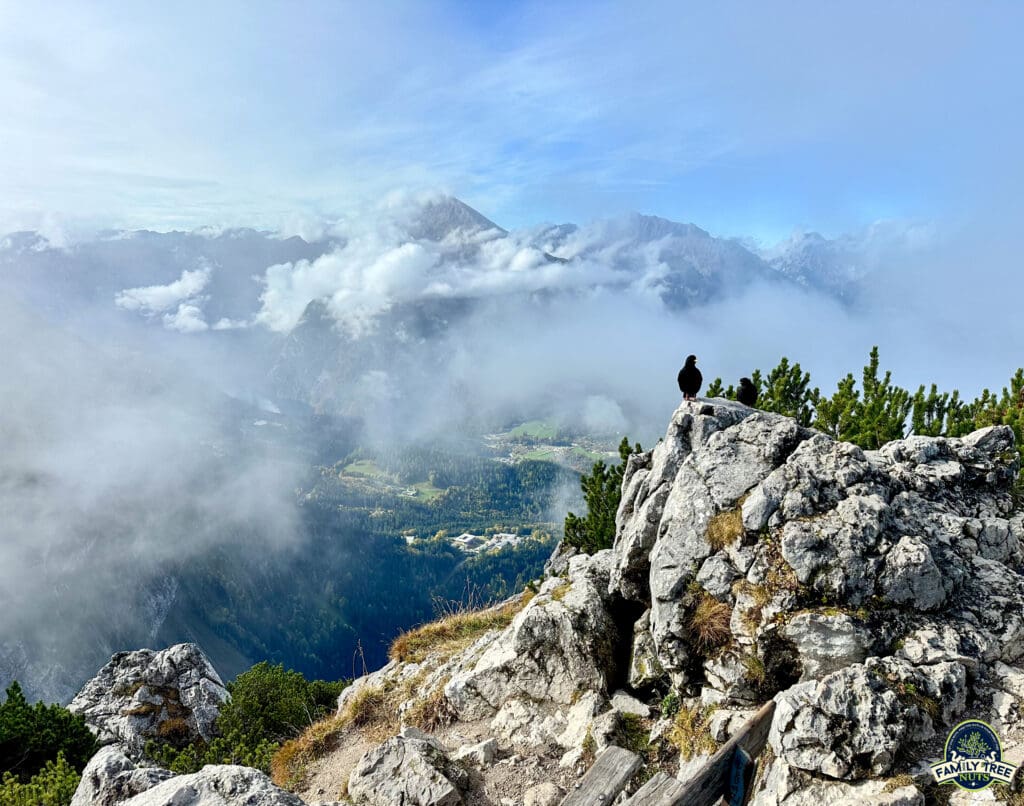
Now, let’s dive into why this place exists. The Eagle’s Nest was a gift to Adolf Hitler for his 50th birthday in 1939, dreamed up by Martin Bormann, his private secretary. The Nazi Party funded it, pouring immense resources—equivalent to over 150 million euros today—into this mountaintop retreat. Construction began in 1937, and in just 13 months, over 3,000 workers blasted this road out of the rock, built a tunnel, and erected the chalet at 1,834 meters, or 6,000 feet above sea level.
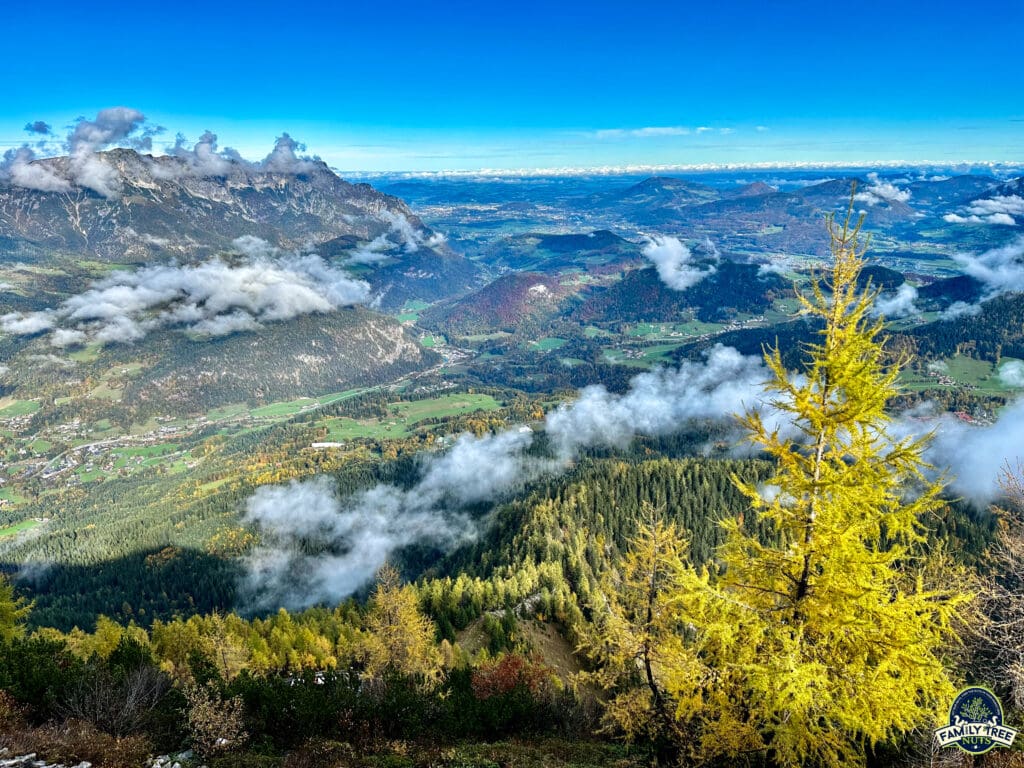
Tragically, 12 workers lost their lives in the rushed effort, driven by the deadline of Hitler’s birthday. Hitler himself had little to do with the design—he was busy in Berlin—but he approved the project as a showpiece for Nazi power. Intended as a retreat and a spot to impress dignitaries, it was rarely used by him. Records show he visited only 14 times, wary of the height and the elevator’s safety. Still, it stands as a testament to both engineering ambition and the regime’s excess, set against one of the planet’s most scenic backdrops.
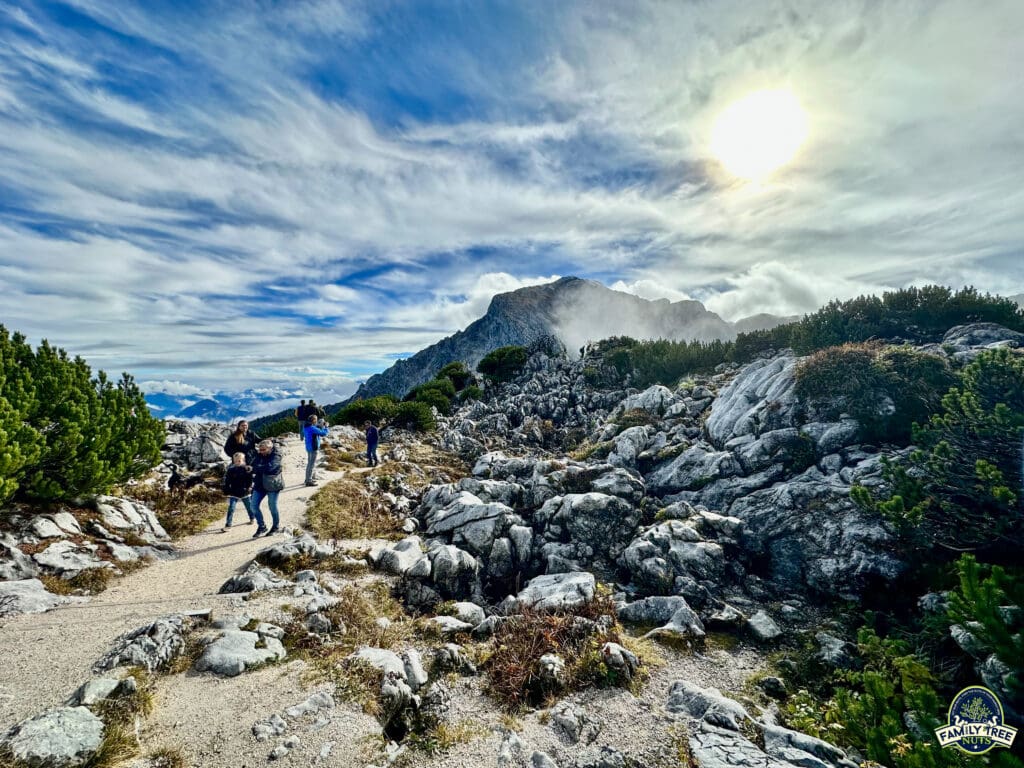
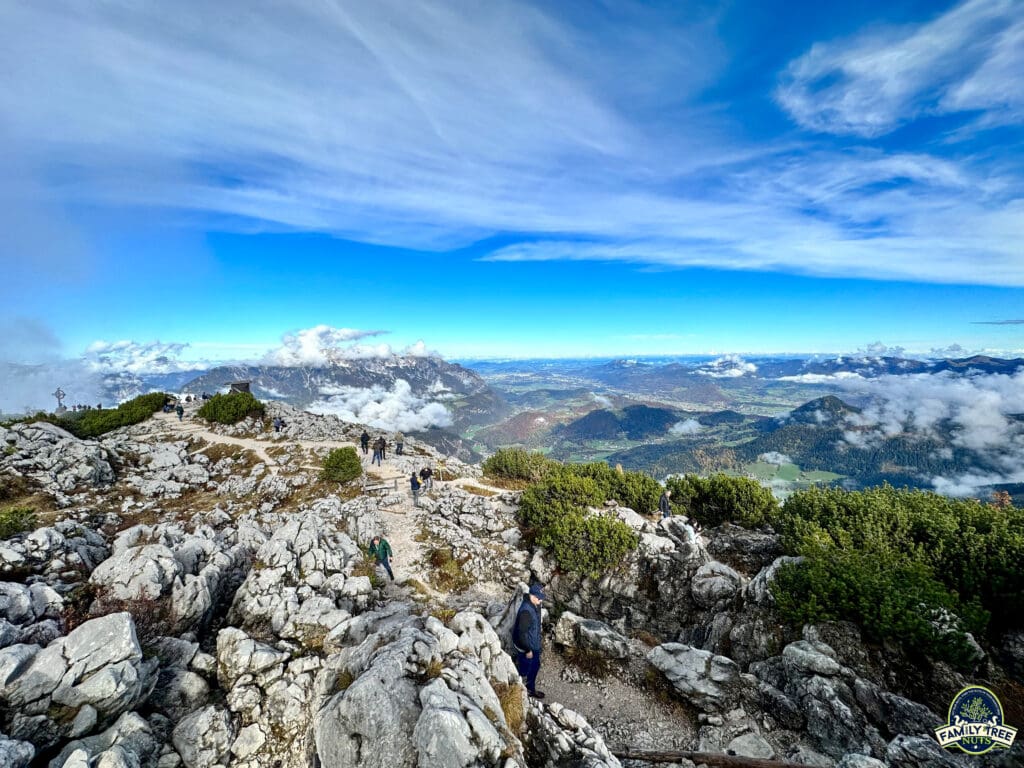
Above the house, remnants of anti-aircraft platforms jut out—concrete bases for guns meant to fend off Allied bombers. They’re a stark reminder of the war, though Hitler barely used this place for strategy. Nearby, hiking trails beckon that are rugged but rewarding, offering solitude and vistas that stretch to infinity. Be careful, though; the drops are sheer, and the trails aren’t for novices.
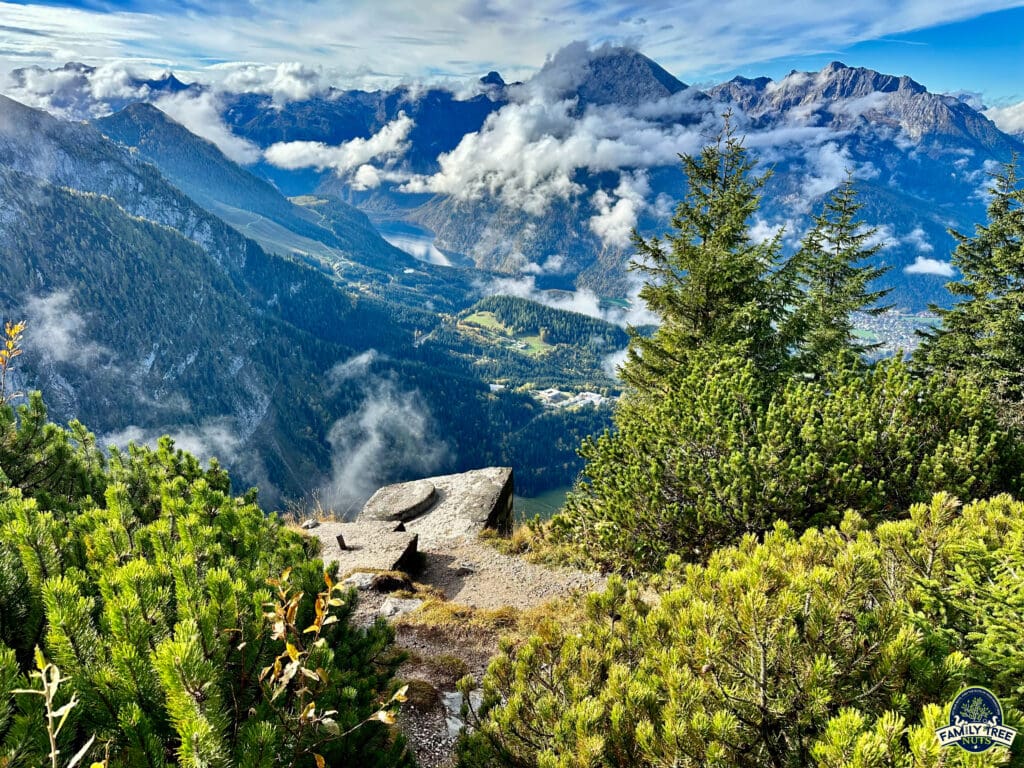
Then there’s the Christian cross monument, a short climb away. It stands bold against the sky, framing the Nest below and the valley beyond. The cross was erected post war as a symbol of peace. From here, the beauty is overwhelming—craggy peaks, lush meadows, and the faint glitter of Berchtesgaden far below. Hitler might’ve stood here briefly, but today, it’s a place of peace, reclaiming the mountain’s soul.
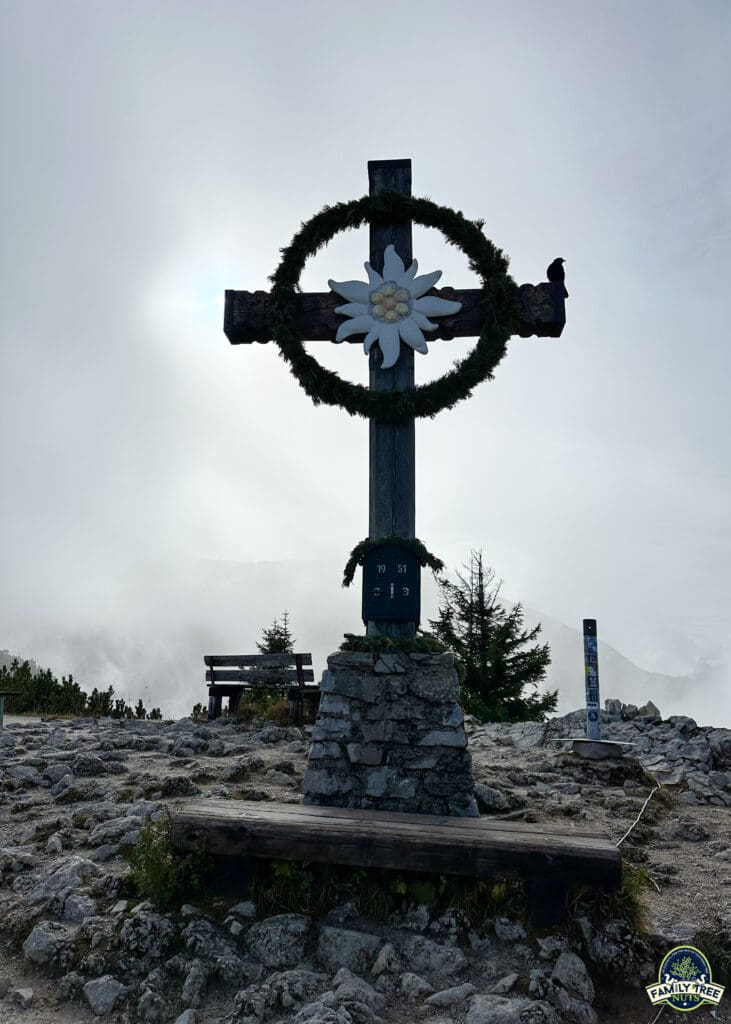
As we wrap up, let’s take one last look at this extraordinary place. The Eagle’s Nest sits like a sentinel above the world, its views a breathtaking blend of wild beauty and haunting history. Below, you might glimpse the ruins of the Berghof, Hitler’s main residence, now just foundations in the trees and Berchtesgaden’s red rooftops peek through the valley haze. Sometimes, the clouds roll in, wrapping you in a dreamlike shroud—other times, the sky opens wide, revealing a landscape so vast it humbles you. This isn’t just a relic of the past; it’s a testament to nature’s enduring splendor.

So now we know the story and have seen the amazing sights of the Eagles Nest. What do you think? Have you ever been here before is it one you bucket list? What do you think of the history of the place? How about its views, have you seen better? We’d love to hear what you have to say in the comments below. We are proud to share this information with all of you, and be sure to see our video from here at the link below. And remember, Family Tree Nuts, let out nuts find the nuts in your family tree.
-Colonel Russ Carson, Jr., Founder, Family Tree Nuts
